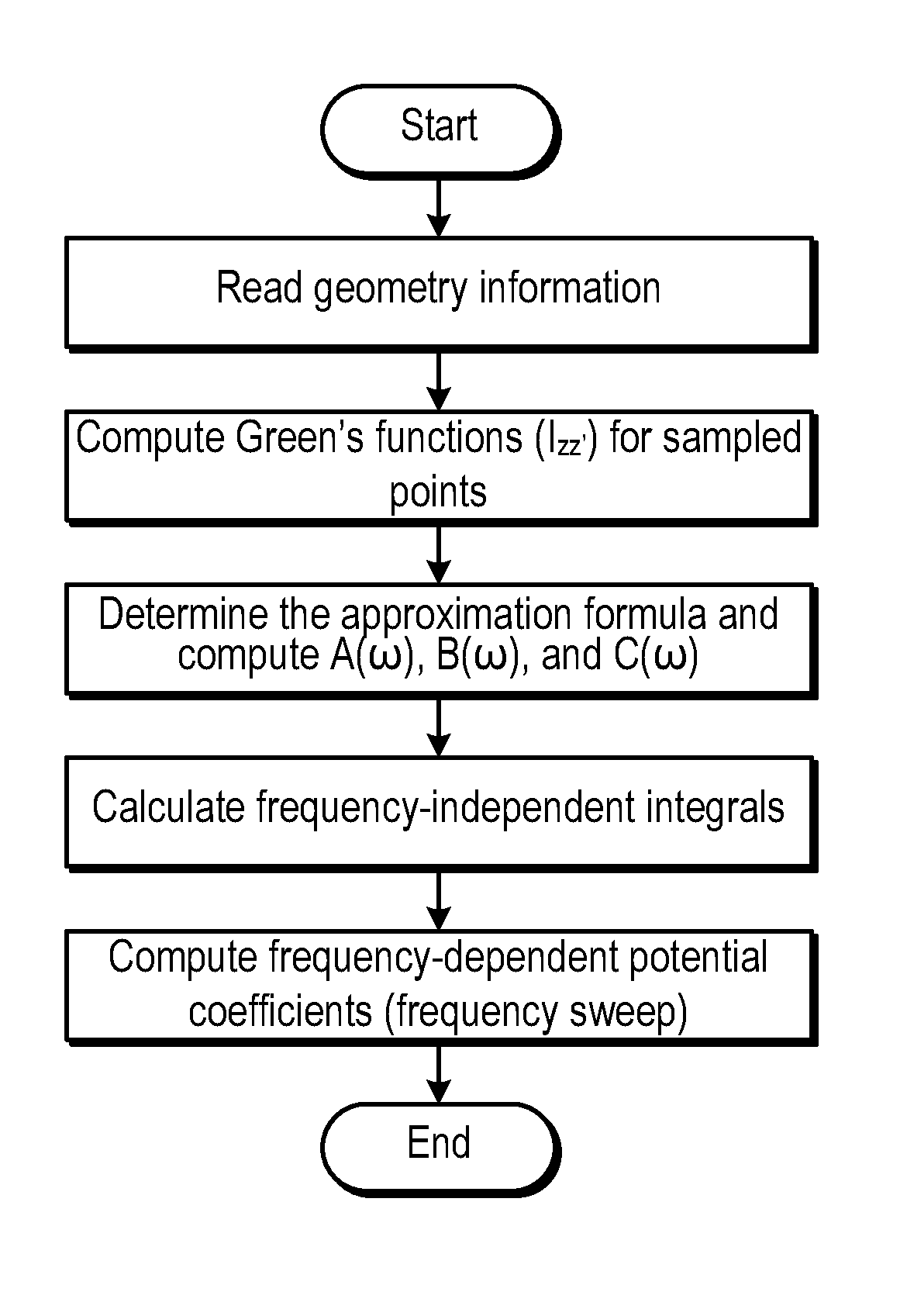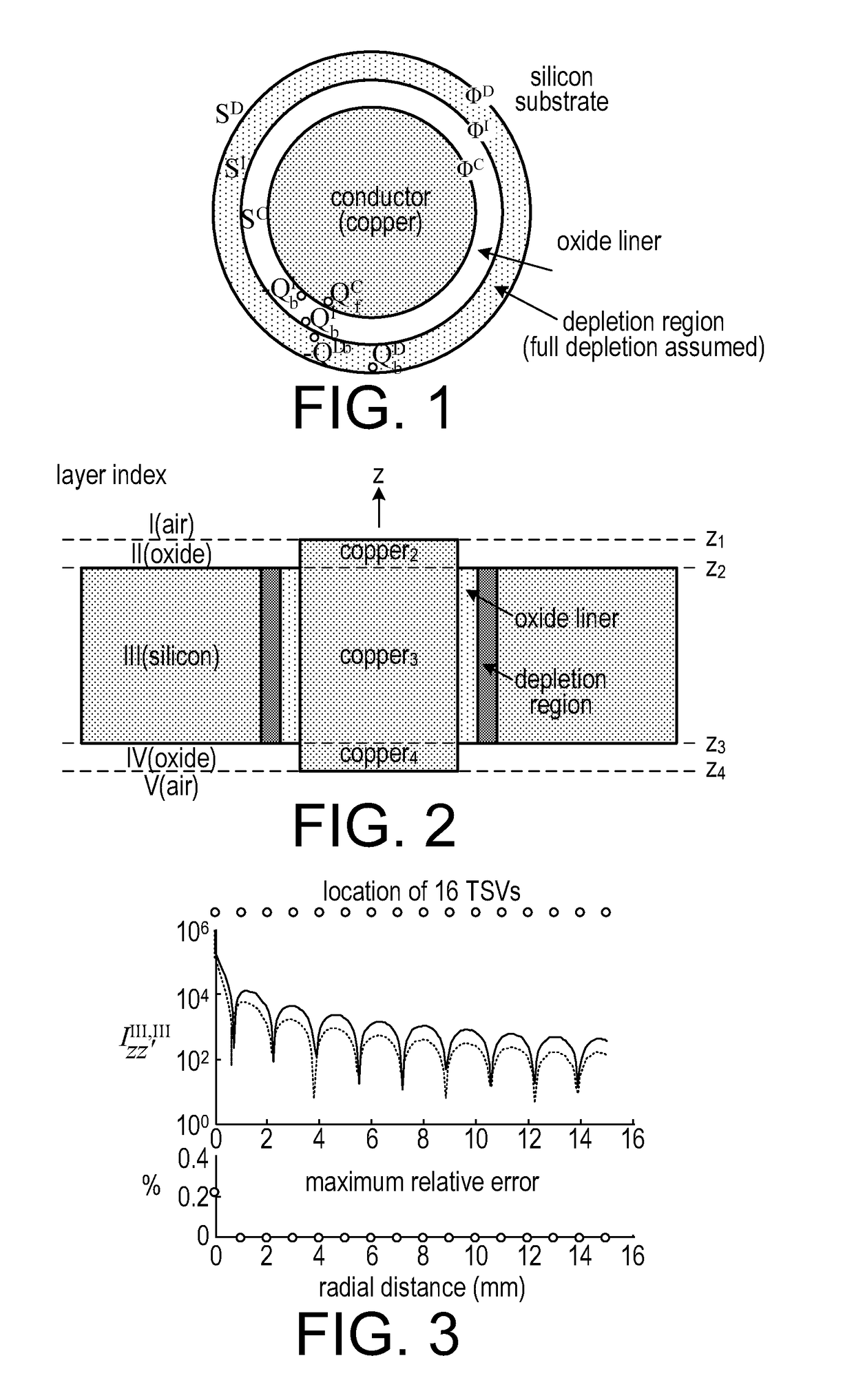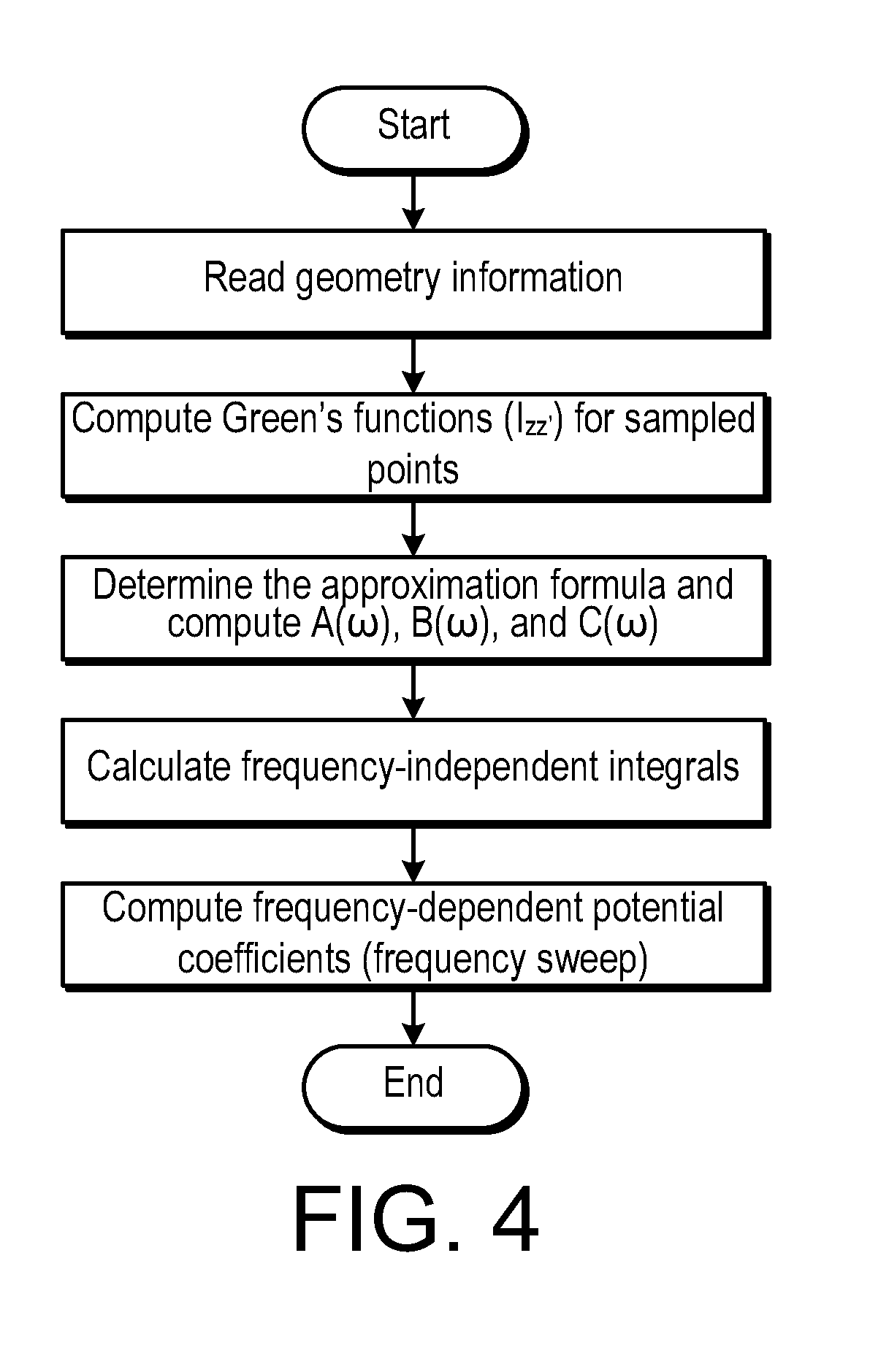Modeling TSV interposer considering depletion capacitance and substrate effects
a technology of capacitance and substrate, applied in the field of system for modeling electromagnetic effects, can solve the problems of inaccurate methods, inability to consider or approximate the importance of design optimization requirements, and inability to accurately model important characteristics
- Summary
- Abstract
- Description
- Claims
- Application Information
AI Technical Summary
Benefits of technology
Problems solved by technology
Method used
Image
Examples
example 1
A TSV Pair with Depletion Regions
[0073]A TSV pair with main geometry parameters indicated is shown in FIG. 5. Diameter (DCu), pitch (P), and oxide liner thickness (d0X) are fixed to 30 μm, 50 μm, and 0.1 μm, respectively. Except for the last two cases of TSVs in this subsection, the total substrate thickness (Hcu) is 100 μm, and silicon conductivity is 10 S / m.
[0074]Scattering parameters of the TSV pair up to 20 GHz for the increased depletion thickness (ddep) are shown in FIG. 6. Difference in the magnitudes of insertion loss is more emphasized up to the low-to-mid frequency range of 5 GHz, but the effect of varying depletion thickness becomes smaller at high frequencies, where the substrate admittance is more dominant. Correlations with HFSS simulation results confirm the accuracy of the method.
[0075]The effect of the varying oxide layer thickness (tox) on the transmission response when the depletion thickness (ddep) is fixed to 0.1 um is shown in FIG. 7. Since the total thickness ...
example 2
Coupling between Two TSV Pairs
[0081]Since the depletion depth can be varied through an applied DC voltage, one can utilize this property for adaptive interconnection design. A three-TSV configuration in this subsection is presented as an example. The diameter (DCu) and the oxide liner thickness (dox) of all TSVs are 30 μm and 0.1 μm, respectively. The depletion thickness of TSV 2 and TSV 3 is 0.5 μm, but TSV 1 does not have a depletion region. The oxide layer thickness (tox) is 0.1 μm. As shown in FIG. 10, TSV 2 and TSV 3 share TSV 1 as a return path. FIG. 10 also shows a time-domain simulation setup with the excitation voltage waveform. This assumes that each TSV is biased by a separate DC voltage to form a depletion region but the bias voltages are not indicated in FIG. 10.
[0082]The far-end crosstalk responses for two cases in frequency and time domains, respectively are shown in FIG. 11 and FIG. 12. Although not shown, near-end crosstalk waveforms exhibit similar behaviors with t...
example 3
10-by-10 TSV Array
[0083]The final example is an array composed of 100 TSVs, which is constructed to demonstrate the capability of handling a large TSV structure in real 3-D ICs using the method. The configuration of the array is shown in FIG. 13, where all TSVs are assumed to be signal TSVs. With the main geometric parameters in FIG. 13, three different cases are simulated: 1) ddep=0 μm, tox=0.1 μm; 2) ddep=0.3 μm, tox=0.1 μm; and 3) ddep=0 μm, tox=3 um. F or all cases, the diameter of copper via is 5 μm, the thickness of the entire silicon substrate is 50 μm, and the oxide liner thickness is 0.1 μm. Although the elapsed time for simulating the three cases is considerable, the method can provide the response of these large structures that generic EM simulation tools cannot handle.
[0084]The insertion loss (IL), the return loss (RL), and the near-end couplings (XT) for the three cases is shown in FIG. 14. As presented in the characterization of other via or TSV array structures, the f...
PUM
 Login to View More
Login to View More Abstract
Description
Claims
Application Information
 Login to View More
Login to View More - R&D
- Intellectual Property
- Life Sciences
- Materials
- Tech Scout
- Unparalleled Data Quality
- Higher Quality Content
- 60% Fewer Hallucinations
Browse by: Latest US Patents, China's latest patents, Technical Efficacy Thesaurus, Application Domain, Technology Topic, Popular Technical Reports.
© 2025 PatSnap. All rights reserved.Legal|Privacy policy|Modern Slavery Act Transparency Statement|Sitemap|About US| Contact US: help@patsnap.com



